Using Disclaimer Trusts in New York: Providing Flexibility for Beneficiaries and Optimizing Your Estate Plan
Estate planning is not just about making decisions today; it’s also about providing flexibility for the future. Circumstances can change, and your beneficiaries may have needs or goals that you cannot anticipate. A Disclaimer Trust is a valuable tool that can be incorporated into your estate plan to provide beneficiaries with the option to disclaim (refuse) an inheritance, allowing assets to pass to an alternate beneficiary or trust in a way that minimizes taxes and maximizes benefits. This is a great option for various reasons. At Morgan Legal Group, serving New York City and beyond, we understand the importance of flexibility in estate planning and are dedicated to helping our clients create plans that adapt to changing circumstances. This comprehensive guide explores the benefits and uses of Disclaimer Trusts in New York, providing valuable insights into how they work and how they can be integrated into your estate plan. They serve as great options to meet the needs of your family.
What is a Disclaimer Trust?
A Disclaimer Trust is a type of trust that is created as part of your will or revocable living trust. It is designed to provide beneficiaries with the option to disclaim their inheritance, meaning they can refuse to accept the assets. If a beneficiary disclaims their inheritance, the assets are then transferred to the Disclaimer Trust, where they are managed according to the terms of the trust agreement. The Disclaimer Trust typically benefits the disclaiming beneficiary’s children or other family members.
Key features of a Disclaimer Trust:
- Beneficiary Flexibility: The beneficiary has the option to accept or disclaim their inheritance.
- Post-Mortem Planning: The Disclaimer Trust allows for estate planning to occur after your death, adapting to changing circumstances.
- Asset Protection: Assets held in the Disclaimer Trust may be protected from the beneficiary’s creditors.
- Tax Benefits: Disclaiming assets into the Disclaimer Trust can help minimize estate taxes.
These features make Disclaimer Trusts a valuable tool for estate planning. They have many advantages for an estate.
Why Use a Disclaimer Trust in New York Estate Planning?
Disclaimer Trusts offer several benefits for estate planning in New York:
- Flexibility for Beneficiaries: A Disclaimer Trust allows beneficiaries to make informed decisions about their inheritance based on their individual circumstances at the time of your death.
- Estate Tax Optimization: Disclaiming assets into a Disclaimer Trust can help minimize estate taxes, particularly if the beneficiary already has a large estate of their own.
- Asset Protection: Assets held in a Disclaimer Trust may be protected from the beneficiary’s creditors, providing an additional layer of financial security.
- Planning for Medicaid Eligibility: A Disclaimer Trust can be used to protect assets for a surviving spouse who may need to qualify for Medicaid in the future.
These benefits make Disclaimer Trusts a valuable addition to many estate plans. This allows for many avenues of asset protection.
How Does a Disclaimer Trust Work? A Step-by-Step Guide
Here’s a step-by-step guide to how a Disclaimer Trust works:
- Establish the Trust: Work with an estate planning attorney to create a will or revocable living trust that includes a Disclaimer Trust provision.
- Death of the Grantor: Upon your death, your assets are transferred to your estate or revocable living trust.
- Beneficiary’s Decision: Your beneficiaries have the option to accept or disclaim their inheritance.
- Disclaimer: If a beneficiary chooses to disclaim their inheritance, they must do so in writing and within nine months of your death.
- Transfer to Disclaimer Trust: The disclaimed assets are then transferred to the Disclaimer Trust.
- Trust Administration: The trustee manages the assets in the Disclaimer Trust according to the terms of the trust agreement.
The trustee manages the assets according to the instructions you laid out in your will or trust. Each decision has legal and financial implications.
Qualifying Disclaimers: Requirements Under New York Law
For a disclaimer to be valid under New York law, it must meet certain requirements:
- Writing: The disclaimer must be in writing and signed by the beneficiary.
- Irrevocable: The disclaimer must be irrevocable, meaning it cannot be changed or revoked once it’s made.
- Timely: The disclaimer must be made within nine months of the date of your death or the date the interest was created.
- No Acceptance of Benefits: The beneficiary cannot have accepted any benefits from the disclaimed property.
- Delivery: The disclaimer must be delivered to the executor or trustee of your estate.
Strict compliance with these requirements is essential for a valid disclaimer. Consult with an attorney to ensure your disclaimer is properly executed. Following the steps protects the process.
The Nine-Month Deadline: Why Timely Action is Crucial
The nine-month deadline for disclaiming an inheritance is a strict requirement under New York law. Failing to disclaim within this timeframe will prevent the beneficiary from using a Disclaimer Trust. It’s important to act promptly and consult with an attorney to determine if a disclaimer is appropriate for your situation. Quick action is essential to preserve your options. Time is essential for all parties involved.
Factors to consider when deciding whether to disclaim:
- The beneficiary’s financial situation
- The beneficiary’s estate tax liability
- The beneficiary’s desire to provide for other family members
Making an informed decision is crucial for maximizing the benefits. Seek legal and financial advice promptly.
Who Benefits from a Disclaimer Trust? Identifying Potential Beneficiaries
The beneficiaries of a Disclaimer Trust are typically the disclaiming beneficiary’s children or other family members. The trust agreement should specify who will benefit from the trust and how the assets will be managed. Carefully consider your options and specify your wishes clearly.
Common beneficiaries of a Disclaimer Trust:
- The disclaiming beneficiary’s children
- The disclaiming beneficiary’s grandchildren
- Other family members
- Charitable organizations
These people will be the ones to reap the financial reward from the trust. Clearly define who will be in charge and make the important decisions.
Tax Implications of Disclaimers: Minimizing Estate and Gift Taxes
Disclaiming an inheritance can have significant tax implications, potentially reducing both estate and gift taxes. By disclaiming assets into a Disclaimer Trust, you can:
- Reduce the size of your taxable estate
- Avoid gift tax on the transfer of assets to the trust
- Potentially minimize estate taxes at the death of the disclaiming beneficiary
However, it’s important to consult with an attorney and tax advisor to understand the specific tax implications of disclaiming assets in your situation. Tax planning should be done properly. All legal and ethical strategies should be considered.
Protecting Assets from Creditors: The Asset Protection Benefits of Disclaimer Trusts
Assets held in a Disclaimer Trust may be protected from the beneficiary’s creditors, providing an additional layer of financial security. This can be particularly valuable for beneficiaries who are in high-risk professions or who have a history of financial difficulties. This strategy allows for the opportunity to protect for your beneficiaries.
Disclaimer Trusts are not foolproof asset protection devices, and creditors may be able to reach the assets in certain circumstances. Work with an attorney to maximize asset protection benefits. Protection requires careful planning.
Using Disclaimer Trusts for Medicaid Planning: A Potential Strategy for Surviving Spouses
In some cases, Disclaimer Trusts can be used as part of a Medicaid planning strategy for surviving spouses. If a surviving spouse disclaims assets into a Disclaimer Trust, those assets may not be counted towards their Medicaid eligibility. This can allow the surviving spouse to qualify for Medicaid benefits while still ensuring that the assets are used to provide for their care and support. This is beneficial for all, and provides a helpful resource to make medical care more easily available.
Medicaid planning is complex, and it’s important to work with an experienced elder law attorney to ensure that your plan complies with all applicable regulations. Expert guidance is essential for navigating Medicaid rules.
The Role of the Trustee: Managing the Disclaimer Trust
The trustee is responsible for managing the Disclaimer Trust and making distributions to the beneficiaries. The trustee must act in the best interests of the beneficiaries and follow the terms of the trust agreement. This includes making responsible investment decisions, keeping accurate records, and filing tax returns. The trustee should be reliable and trustworthy.
Key considerations when choosing a trustee:
- Financial acumen
- Trustworthiness and integrity
- Availability and willingness to serve
- Understanding of the beneficiary’s needs
Proper trustee selection is crucial for the success of the Disclaimer Trust. Finding someone you trust is very important.
Drafting the Disclaimer Trust Provision: Key Elements to Include
The Disclaimer Trust provision in your will or trust should be carefully drafted to ensure it is valid and effective. Key elements to include:
- Clear language stating that beneficiaries have the right to disclaim their inheritance
- Specific instructions for how disclaimed assets should be distributed
- The name of the trustee who will manage the Disclaimer Trust
- The powers and responsibilities of the trustee
- Provisions for successor trustees in case the initial trustee is unable or unwilling to serve
An experienced attorney can help you draft a comprehensive Disclaimer Trust provision that meets your specific needs. Trusting the process leads to a successful outcome. There are countless benefits to working with a lawyer.
Coordinating the Disclaimer Trust with Your Overall Estate Plan
A Disclaimer Trust should be carefully coordinated with your overall estate plan, including your will, other trusts, and beneficiary designations. This ensures that all aspects of your plan work together seamlessly and achieve your desired outcomes. Coordinating these pieces is crucial for a successful estate. This maximizes effectiveness.
Your attorney can help you review all of your estate planning documents to ensure they are consistent and effective. A holistic approach is always recommended. This allows all areas of your life to be considered.
Working with an Experienced Estate Planning Attorney in New York
Creating and managing a Disclaimer Trust involves complex legal and financial considerations. It’s important to work with an experienced estate planning attorney who is knowledgeable about New York law and committed to providing personalized and effective legal services. An attorney can help you by working with New York state requirements.
Look for an attorney who:
- Specializes in estate planning
- Has experience with Disclaimer Trusts
- Is responsive to your needs
- Communicates clearly and effectively
- Understands your values and goals
Choosing the right attorney is essential for a smooth and successful estate planning process. Seek the best possible option.
Securing Your Family’s Future with Morgan Legal Group
At Morgan Legal Group, we are dedicated to helping individuals and families in New York create comprehensive estate plans that provide for their loved ones and protect their assets. Our experienced attorneys have a deep understanding of Disclaimer Trusts and other advanced estate planning techniques and are committed to providing personalized and effective legal services. Contact us today to schedule a consultation and learn more. Trust your future with Morgan Legal Group. We are here for you.
Morgan Legal Group proudly serves the New York City community including the Bronx, Brooklyn, NYC, Queens, and Staten Island. If you are outside of New York City we also serve Long Island including Suffolk County. As well as Westchester, Ulster County, and Orange County.NY Courts









